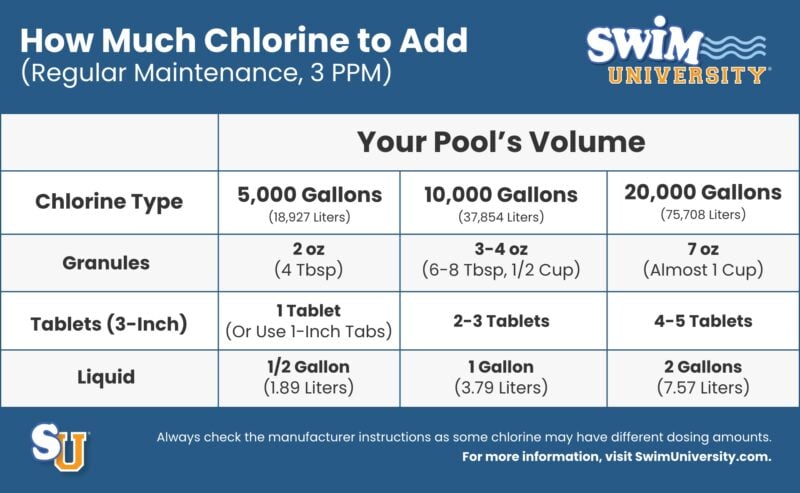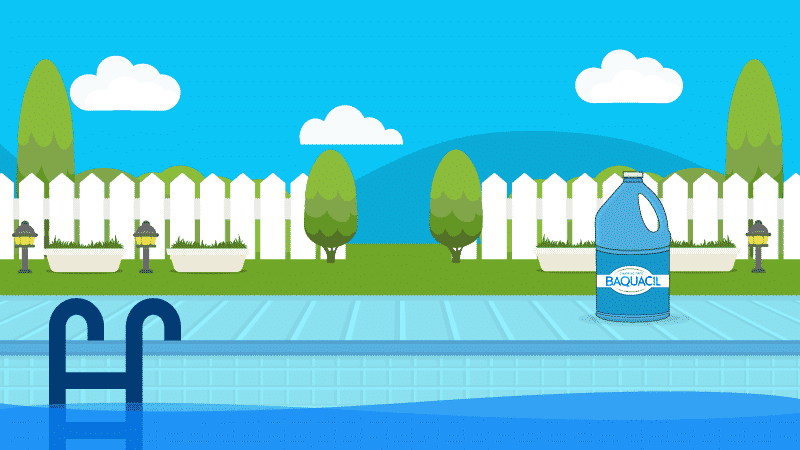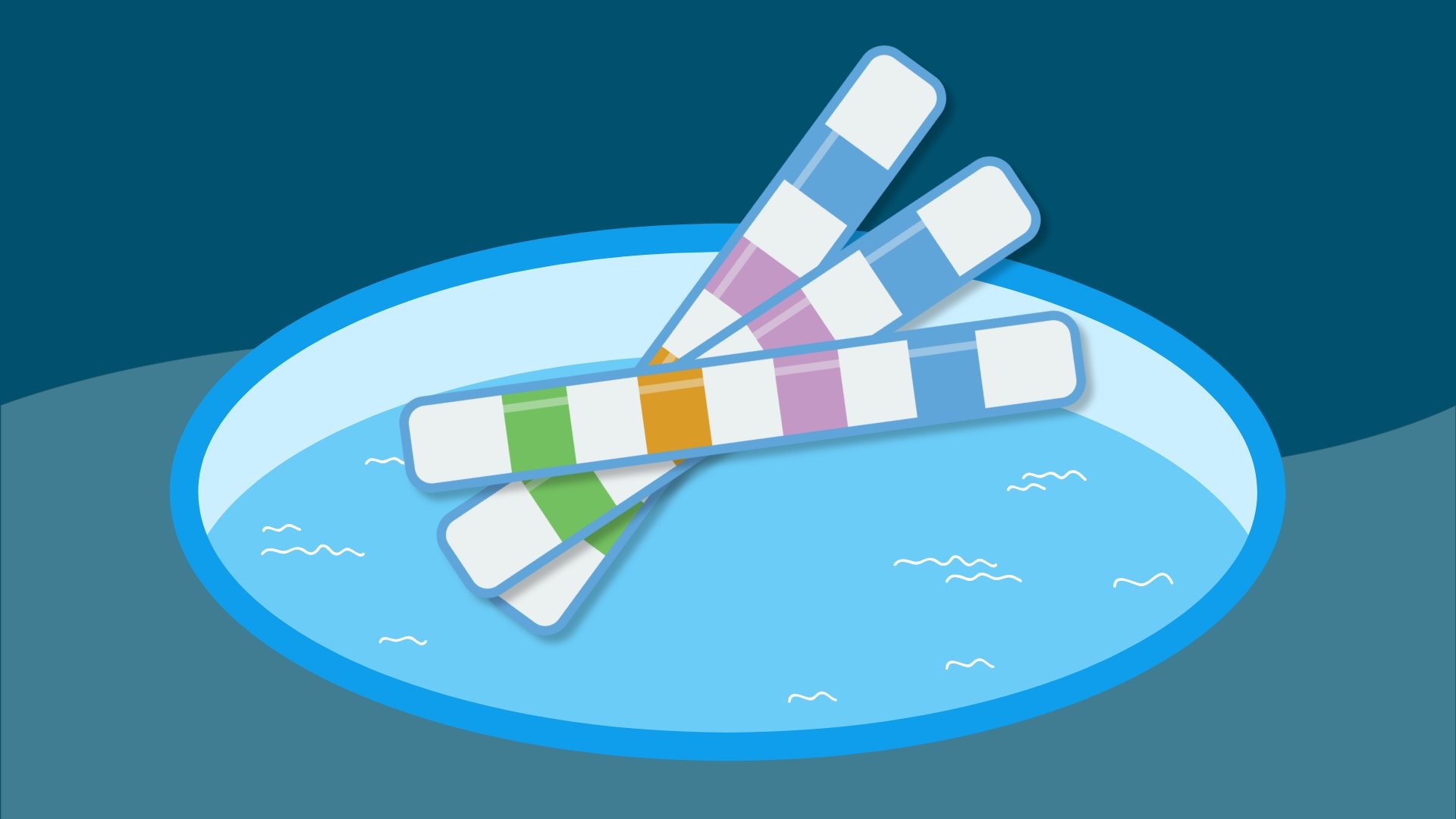How Much Chlorine Should I Add to My Pool?
How much chlorine does your pool need? Usually, it only takes a few tablets or a cup of granules to keep your water sanitized. But it all depends on the size of your pool and what type of chlorine you buy.
So here’s a quick guide on figuring out exactly how much chlorine you need to add to your pool.
Stop wasting time and money with confusing water chemistry and maintenance. Our effortless system guarantees to keep your pool balanced, sanitized, and crystal clear all year. Works for all pools including saltwater.
What Are The Right Chlorine Levels for a Pool?
Your free chlorine should be between 1 and 3 PPM, with 3 PPM being ideal. Unfortunately, chlorine tends to fluctuate. Debris, contaminants, rain, extra swimmers in the water, and even sunlight can cause your chlorine levels to drop.
Testing your water and replenishing your chlorine weekly will help keep your levels in check. Before we calculate how much to add, you’ll need to choose what type of chlorine you want to use.
There are three common forms: granules, tablets, and liquid chlorine.
1. Chlorine Granules (Powdered Chlorine)
This type of chlorine is made of dichlor chlorine, which is added directly to the water by broadcasting the granules over your pool’s surface. That means you have to add it by hand each week, but it gives you more control over dosing.
This type of chlorine is also stabilized, meaning it contains cyanuric acid, or CYA. CYA helps protect your chlorine from breaking down in direct sunlight.
2. Chlorine Tablets (Pucks)
These are made of trichlor chlorine and come in 3-inch pucks or 1-inch tablets. They’re added to a dispenser, like a floater or automatic chlorinator.
Tablets are more hands-off than granules, but the dosing is harder to control. Things like water temperature and how often you run your pump can affects the rate that your tablets dissolve.
Like granules, chlorine tablets also contain cyanuric acid, which helps prevent your chlorine from breaking down in the sun. But CYA can quickly build up in your pool when using tablets, so be sure to monitor those levels.
3. Liquid Chlorine
Liquid chlorine is usually 10 to 12% chlorine by volume. That’s about twice as potent as household bleach. But it’s a lot less potent than chlorine granules or tablets.
Liquid chlorine is also unstabilized, meaning it doesn’t contain cyanuric acid. That means it will break down in direct sunlight unless you supplement it with chlorine stabilizer, a.k.a. cyanuric acid.
Okay, you’ve got your chlorine. Before adding any chlorine to your pool, you need to take one step.
Here’s Exactly How Much Chlorine to Add to Your Pool
First, test your water and balance your pH and alkalinity. Getting these levels in range first will help your chlorine work more effectively. I recommend using test strips because they’re quick and easy. But if you want to be more accurate, you can use a liquid test kit.
Tests for 7 important chemistries in seconds: Total Hardness, Total Chlorine, Total Bromine, Free Chlorine, pH, Total Alkalinity, and Cyanuric Acid.
And knowing where your free chlorine levels will help you decide how much chlorine to add. By the way, if you need help balancing your other levels, like alkalinity and pH, be sure to check out the video below.
You’ll need to know your pool’s volume. And make sure your pump and filter are running before adding chlorine to your water. This will help it circulate and dissolve.
 Rectangle
Rectangle
 Round
Round
Here’s a dosing chart for how much chlorine to add each week. This is assuming your chlorine levels aren’t completely out of range and you just need to add a maintenance dose.

- For chlorine granules, add 2 to 3 ounces for every 5,000 gallons. That’s 4 to 6 tablespoons of chlorine. So, if you have a 20,000-gallon pool, that’s about 7 ounces of chlorine or a little under a cup.
- For 3-inch chlorine tablets, add 1 tablet for every 5,000 gallons of pool water, which is about 4 tablets for a 20,000-gallon pool. If your pool holds 10,000 gallons of water or more, 3-inch tablets work great. But they can quickly overwhelm smaller pools, so opt for 1-inch tablets, granules, or liquid chlorine instead.
- For liquid chlorine, add a half gallon of liquid for every 5,000 gallons. That means you’ll need 2 gallons of liquid chlorine for a 20,000-gallon pool. Remember, this is for pool-grade liquid chlorine, not household bleach, which is not as strong.
What if your chlorine levels are off the charts? What if it’s at zero?
If your chlorine is too high, stop adding chlorine to the water and see if your chlorine levels drop naturally on their own. If you’re not getting a chlorine reading at all or it keeps dropping to zero, it’s time to shock your pool.
Shocking is a concentrated dose of chlorine that can help bring your levels back into range. But if your chlorine continues to remain low, even after shocking, your cyanuric acid levels may be off or you might have a chlorine demand issue. Be sure to check out our other video about how to raise your free chlorine.
Frequently Asked Questions About How Much Chlorine To Add To A Pool
I emailed 88,000 pool owners and asked them if they had any questions about chlorine. Here are the most common questions I was asked, and these are my answers.
Can I put too much chlorine in my pool?
Yes. If you put too much chlorine in your pool (above 5 ppm), wait until it drops to around 3 ppm. This should take about 24 hours, depending on the weather. If you need to drop it quicker, add fresh water or use a chlorine neutralizer.
Do I need to add chlorine to my pool daily?
Yes. You need to keep your chlorine reading between 1 and 3 ppm. You can do this by adding chlorine tablets to a floater or feeder, or you can add liquid chlorine or granules manually every day. To avoid daily additions, I recommend using chlorine tablets in a floater or feeder (a feeder is best).
Is liquid chlorine the same as shock?
Technically, yes. “Shock” is simply the act of super-chlorinating your pool. But there’s a chemical also called Shock, which is just a concentrated dose of chlorine (around 60-70%). Liquid chlorine is not concentrated (only 12-15% chlorine), but if you add enough of it to reach over 10 ppm of chlorine, then you are effectively “shocking” or oxidizing your pool. There’s also non-chlorine shock, which is also known as oxidizer. This does not raise chlorine; it only oxidizes (refreshes chlorine).
Should I shock my pool or just add chlorine?
You should add chlorine to keep your reading between 1 and 3 ppm (3 ppm is ideal). I recommend shocking your pool every week or two using non-chlorine shock to refresh the chlorine in the water. Non-chlorine shock (oxidizer) is great for general maintenance if your water looks good. I would use a chlorine shock if your water is cloudy or green.
How long after putting chlorine in pool can you swim?
As long as your chlorine reading is between 1 and 3 ppm (parts per million), it’s safe to swim. I recommend testing the water a few hours after adding chlorine to make sure the level is safe for swimming. If not, wait until the levels come down before allowing anyone in the pool.
3 Ways We Can Help With Your Pool
- The Pool Care Handbook: An illustrated guide to DIY pool care, including water chemistry, maintenance, troubleshooting, and more.
- The Pool Care Video Course: You’ll get 30+ step-by-step videos and a downloadable guide with everything you need to know about pool maintenance.
- The Pool Care App: Enter your water test results. Get a custom treatment plan. Know exactly what chemicals to add to keep your pool clear.













